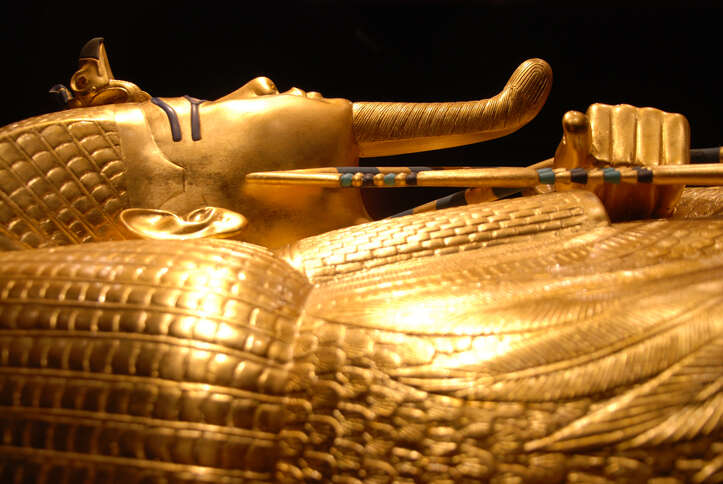
Throughout human history, wine and other libations have been central to ceremonies and rituals marking the passage from this world to the afterlife, says Stuart Walton.
Among the riches uncovered when Howard Carter’s archaeological team finally located the tomb of Egypt’s King Tutankhamun a century ago were 26 wine jars. Crowded into the annex chamber along with containers for unguents and perfumes, these sizeable ceramic vessels each bore a clay seal on which was imprinted the details of the contents—its vintage date, geographical origin, and the name of the winemaker, one “Khaa” in the case of the Western River cru. The identity of the varietals may have escaped the historical record, but we now know for certain that the wine was red. The teenage king was escorted on his journey into the underworld with sufficient provision to sustain the fainting soul.
Inherently mysterious
The inherently mysterious nature of fermented intoxicants in antiquity lent them a spiritual nature, long before distillation into actual spirits had been discovered. There was an elusive something at the heart of wine and beer that made it more than it appeared to be, and that precisely fitted it for those venturing into whatever version of the afterlife individual cultures imagined. The voyage into the hereafter was often portrayed as arduous, a laborious transition from the present world to the divine reward that awaited the noble and the just. If you were going to spend a while in limbo, you might as well pack for the journey. The Egyptians probably believed that the wine would be miraculously replenished in a realm where sublunary physical laws held no sway.
Note that it was wine that accompanied a monarch of the New Kingdom, rather than the demotic beer of the common people. Essentially, though, the souls of the departed were grateful for any liquid refreshment they could get in a netherworld conventionally pictured as arid. The Sumerians piped beer into the graves of their dead through clay tubes to relieve their parched throats, a custom that persisted through to classical Greek and Roman times.
Providing for the afterlife and the ceremonial act of pouring wine
The practice of providing the dead with wine or beer in the afterworld is closely bound up with the tradition of libation, and the surface-to-tomb feeding tube probably ramified eventually into the simple ritual act of pouring out an offertory liquid on the graves of ancestors, much as it was also poured on altars in honor of tutelary deities. A funeral ceremony—and the anniversary commemoration of those who have passed on—is widely marked throughout many world cultures with the pouring out of a drink that is also shared among the mourners and celebrants. The word “libation” itself derives from the Latin libare, which means both “to taste” and “to pour out,” itself a likely descendant of the Greek λείβειν (leíbein), specifically to pour out a liquid in measured drops.
What is most striking about the practice of funerary libation in the Greco-Roman world is that, if all other amenity was lacking in the obsequies of the humblest members of society, a basic libation was the sine qua non. Virtually nobody was seen off without the ground in which they were interred being anointed. In many instances, it might merely be oil, honey, milk, or even—at the extremity of indigence—plain water, but the nutritive value of fermented drinks matched that of fermented foods like bread in sustaining a soul that had shed its corporeal shell.
Liquor of the gods
Rice wine is spilled in ancestor rituals of great antiquity in eastern Asia. The Shinto shrines of Japan are libated with a ceremonial preparation of sake called miki, “liquor of the gods.” In China, the practice is to pour the wine with both hands in a sweeping gesture from right to left, the same direction in which one reads script. Tombs of the dead are anointed in this way each year. As long ago as the middle Shang Dynasty (c1200 BC), there were concerns that the practice of libation, if carried out too assiduously, seemed to furnish the opportunity for a drinking session among the celebrants, their collective inebriation then giving off a stench that offended Heaven.
The cultural symbolism of libation is not hard to fathom. Once the dead ceased to be buried with provisions for the afterlife, it remained as a final ritual gesture to honour them. The pouring out, without which nobody can drink, is a sublimated form of sacrifice, of offering up something material to the other side, a portion of which the living, in their honour, willingly forgo. Cremation has robbed contemporary mourners of the possibility of anointing the ground into which the dear departed have gone. After my own father’s funeral, we poured the entire tribute of Taittinger down our gullets.






